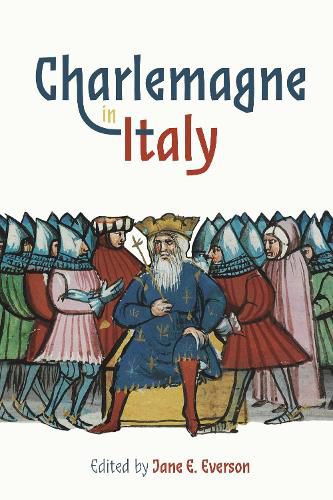Readings Newsletter
Become a Readings Member to make your shopping experience even easier.
Sign in or sign up for free!
You’re not far away from qualifying for FREE standard shipping within Australia
You’ve qualified for FREE standard shipping within Australia
The cart is loading…






Chivalric tales and narratives concerning Charlemagne were composed and circulated in Italy from the early fourteenth to the mid-sixteenth century (and indeed subsequently flourished in forms of popular theatre which continue today). But are they history or fiction? Myth or fact? Cultural memory or deliberate appropriation? Elite culture or popular entertainment? Oral or written, performed or read? This book explores the many depictions of the Emperor in the Italian tradition of chivalric narratives in verse and prose. Beginning in the age of Dante with the earliest tales composed for Italians in the hybrid language of Franco-Italian, which draw inspiration from the French tradition of Charlemagne narratives, the volume considers the compositions of anonymous reciters of cantari and the prose versions of the Florentine Andrea da Barberino, before discussing the major literary contributions to the genre by Luigi Pulci, Matteo Maria Boiardo and Ludovico Ariosto. The focus throughout is on the ways in which the portrait of Charlemagne, seen as both Emperor and King of France, is persistently ambiguous, affected by the contemporary political situation and historical events such as invasion and warfare. He emerges through these texts in myriad guises, from positive and admirable to negative and despised.
$9.00 standard shipping within Australia
FREE standard shipping within Australia for orders over $100.00
Express & International shipping calculated at checkout
Chivalric tales and narratives concerning Charlemagne were composed and circulated in Italy from the early fourteenth to the mid-sixteenth century (and indeed subsequently flourished in forms of popular theatre which continue today). But are they history or fiction? Myth or fact? Cultural memory or deliberate appropriation? Elite culture or popular entertainment? Oral or written, performed or read? This book explores the many depictions of the Emperor in the Italian tradition of chivalric narratives in verse and prose. Beginning in the age of Dante with the earliest tales composed for Italians in the hybrid language of Franco-Italian, which draw inspiration from the French tradition of Charlemagne narratives, the volume considers the compositions of anonymous reciters of cantari and the prose versions of the Florentine Andrea da Barberino, before discussing the major literary contributions to the genre by Luigi Pulci, Matteo Maria Boiardo and Ludovico Ariosto. The focus throughout is on the ways in which the portrait of Charlemagne, seen as both Emperor and King of France, is persistently ambiguous, affected by the contemporary political situation and historical events such as invasion and warfare. He emerges through these texts in myriad guises, from positive and admirable to negative and despised.